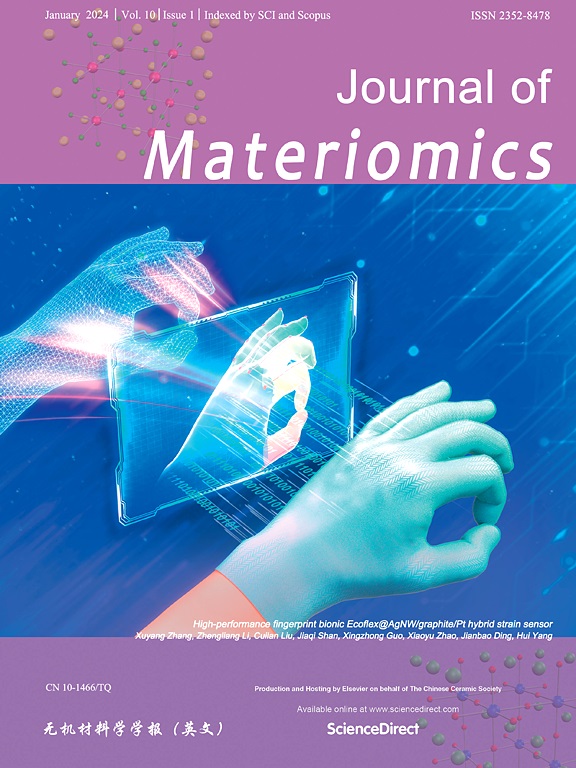Significantly enhanced mechanical quality factor of acceptor-doped quadruple point composition in lead-free Ba(Zr,Ti)O3 ceramics
IF 8.4
1区 材料科学
Q1 CHEMISTRY, PHYSICAL
引用次数: 0
Abstract
High mechanical quality factor (Qm) is crucial in high-power applications of piezoelectric ceramics because it affects key performance parameters such as sensitivity, efficiency, and stability of devices. Acceptor doping has been the state-of-the-art approach to improve Qm. In the past few decades, many previous research has focused on acceptor doping at the phase boundary to achieve high-performance piezoelectric ceramics. Here, we found that compared with the acceptor-doped phase boundary compositions, the acceptor-doped quadruple point composition can achieve significantly enhanced Qm. The optimal Qm value is up to 1100, which is three times higher than the Qm (approximately 254) obtained in the acceptor-doped phase boundary composition, and also higher than the Qm obtained in the acceptor-doped single-phase region compositions. Piezoresponse force microscopy (PFM) characterization reveals that the pinning effect induced by defect dipoles is more pronounced in the acceptor-doped quadruple point composition compared with the acceptor-doped phase boundary composition, resulting in reduced domain mobility and enhanced Qm. This work provides new insights into the design of lead-free and lead-based piezoelectric materials with high mechanical quality factors.

无铅 Ba(Zr,Ti)O3陶瓷中掺杂受体四点成分的机械品质因数显著提高
本文章由计算机程序翻译,如有差异,请以英文原文为准。
求助全文
约1分钟内获得全文
求助全文
来源期刊

Journal of Materiomics
Materials Science-Metals and Alloys
CiteScore
14.30
自引率
6.40%
发文量
331
审稿时长
37 days
期刊介绍:
The Journal of Materiomics is a peer-reviewed open-access journal that aims to serve as a forum for the continuous dissemination of research within the field of materials science. It particularly emphasizes systematic studies on the relationships between composition, processing, structure, property, and performance of advanced materials. The journal is supported by the Chinese Ceramic Society and is indexed in SCIE and Scopus. It is commonly referred to as J Materiomics.
 求助内容:
求助内容: 应助结果提醒方式:
应助结果提醒方式:


